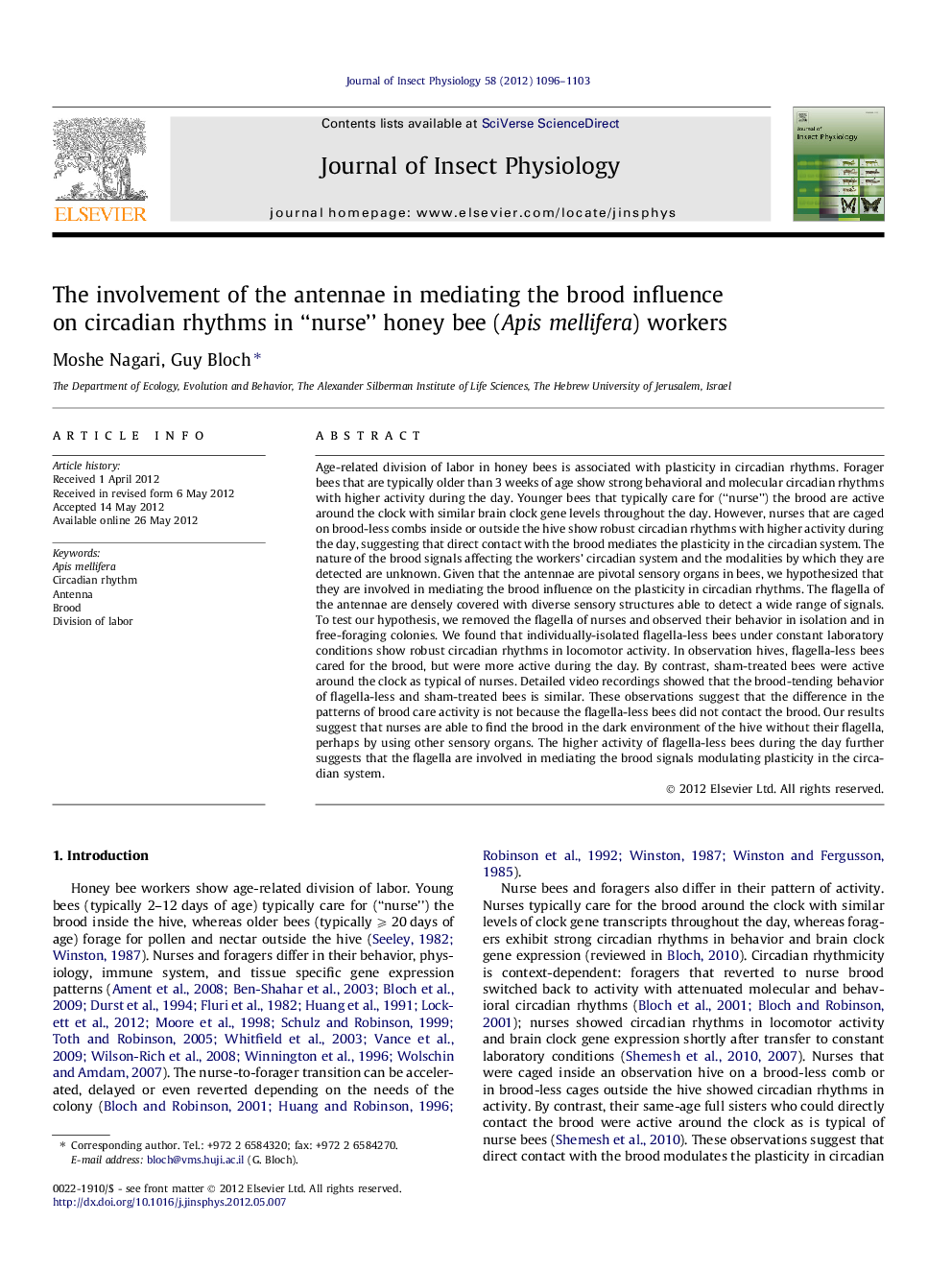| کد مقاله | کد نشریه | سال انتشار | مقاله انگلیسی | نسخه تمام متن |
|---|---|---|---|---|
| 5922027 | 1165344 | 2012 | 8 صفحه PDF | دانلود رایگان |

Age-related division of labor in honey bees is associated with plasticity in circadian rhythms. Forager bees that are typically older than 3Â weeks of age show strong behavioral and molecular circadian rhythms with higher activity during the day. Younger bees that typically care for (“nurse”) the brood are active around the clock with similar brain clock gene levels throughout the day. However, nurses that are caged on brood-less combs inside or outside the hive show robust circadian rhythms with higher activity during the day, suggesting that direct contact with the brood mediates the plasticity in the circadian system. The nature of the brood signals affecting the workers' circadian system and the modalities by which they are detected are unknown. Given that the antennae are pivotal sensory organs in bees, we hypothesized that they are involved in mediating the brood influence on the plasticity in circadian rhythms. The flagella of the antennae are densely covered with diverse sensory structures able to detect a wide range of signals. To test our hypothesis, we removed the flagella of nurses and observed their behavior in isolation and in free-foraging colonies. We found that individually-isolated flagella-less bees under constant laboratory conditions show robust circadian rhythms in locomotor activity. In observation hives, flagella-less bees cared for the brood, but were more active during the day. By contrast, sham-treated bees were active around the clock as typical of nurses. Detailed video recordings showed that the brood-tending behavior of flagella-less and sham-treated bees is similar. These observations suggest that the difference in the patterns of brood care activity is not because the flagella-less bees did not contact the brood. Our results suggest that nurses are able to find the brood in the dark environment of the hive without their flagella, perhaps by using other sensory organs. The higher activity of flagella-less bees during the day further suggests that the flagella are involved in mediating the brood signals modulating plasticity in the circadian system.
Individually isolated flagella-less and control bees showed strong circadian rhythms with higher activity during the subjective day under constant lab conditions (left panel). In the hive, flagella-less nurses showed higher activity during the day, but sham-treated nurse bees were active around the clock similar to typical nurses (right panel). These findings suggest that the flagella are involved in mediating the influence of the brood on plasticity in circadian rhythms in honey bees.Highlights⸠We studied honey bees for which we removed the flagella of their antenna. ⸠Flagella-less nurse bees showed circadian rhythms in brood tending behavior. ⸠Sham-treated bees and typical nurses tended the brood around the clock. ⸠The flagella appear to be involved in modulating plasticity in circadian rhythms.
Journal: Journal of Insect Physiology - Volume 58, Issue 8, August 2012, Pages 1096-1103